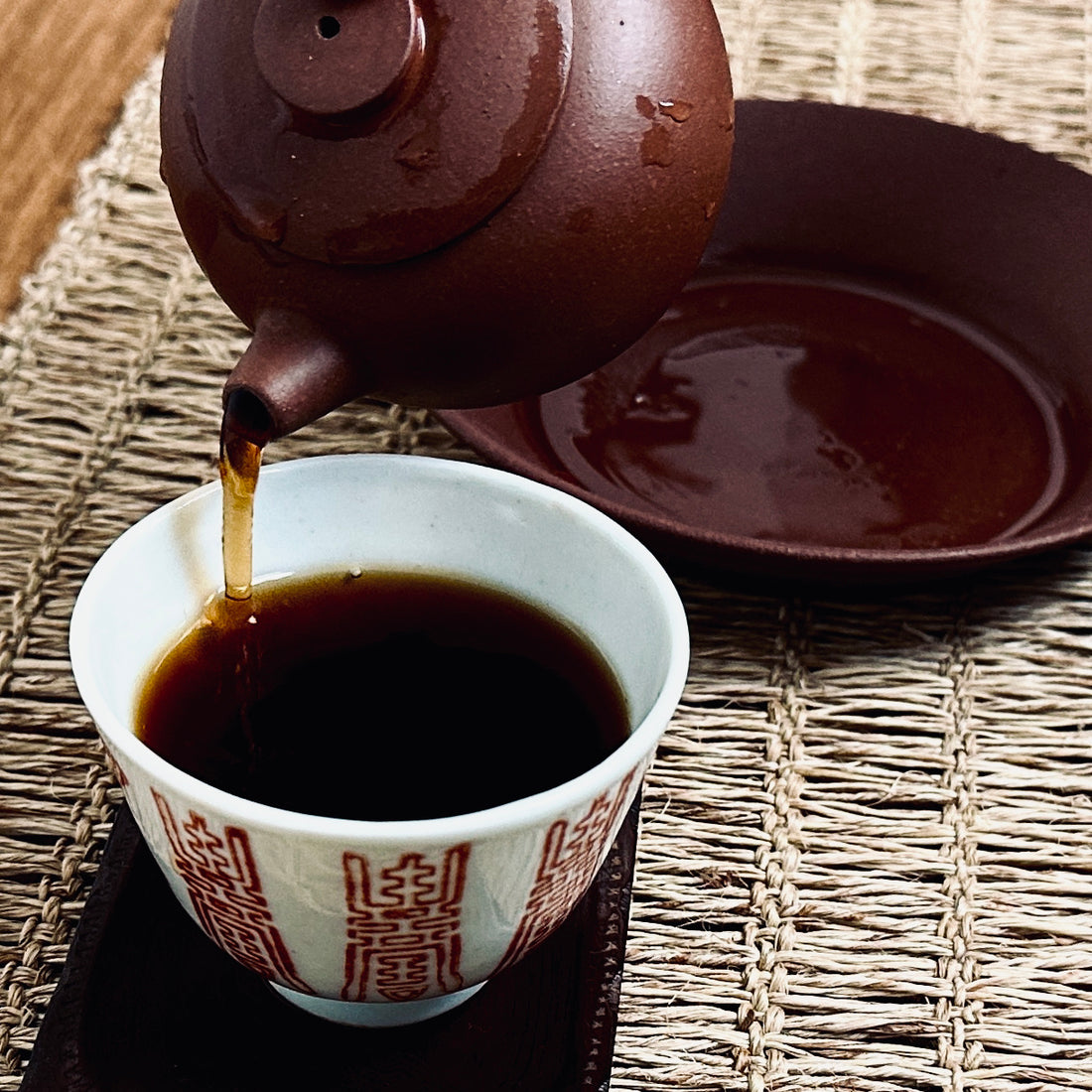Chinese tea, especially the high-quality ones, offers multiple rounds of steeping if brewed skilfully. Most Chinese teas come in the form of loose tea leaves or tea cakes with the latter needing to be broken down before brewing. The brewing process can be influenced by various factors like tea type, leaf size, tea age, storage conditions, and even the compression level of the cake.
This guide serves as a starting point, feel free to experiment and fine-tone base on your preferences.
Brewing with a teapot:
-
Preparing Teawares: Start by pre-warming your teawares. Boil water and rinse the teapot with hot water, ensuring it's warmed up for the brewing process.
-
Adding Tea Leaves: Place the desired amount of tea leaves (usually 2-5g per 70-100ml of water, depending on your taste) into the teapot. Begin with a lighter brew for new teas, adjusting as needed. Delicate teas like green or white teas may require less than 2g, while darker teas like puerh require around 4-5g, and some aged teas may require even more.
-
Rinsing and Steeping: Rinse the tea leaves by pouring hot water into the teapot and quickly pouring it out, removing any dust and awakening the leaves. Add hot water again and steep the tea. Generally, the first round takes around 1 minute, followed by 5-10 seconds for the 2nd and 3rd rounds, then steep for longer as you continue with more rounds.
Brewing with a Bowl / Mug:
The steps for brewing in a bowl or mug are similar to using a teapot, with a couple of differences:
-
No Rinsing: Since you're drinking directly from the bowl or mug, you won't be able to rinse the tea leaves. Don't worry, our teas are clean and ready to be enjoyed.
-
Adjust Steeping Time: Steeping time might vary as the tea continues to steep while you're drinking it. The water also cools down slowly, reducing the risk of over-steeping. Keep in mind that it may not last for as many rounds as when using a teapot.
There is a long and deep history on Chinese tea brewing. The brewing process is full of nuances, can be influenced by so many factors. I will share more detailed information on water temperatures and other tips to enhance your tea experience.

